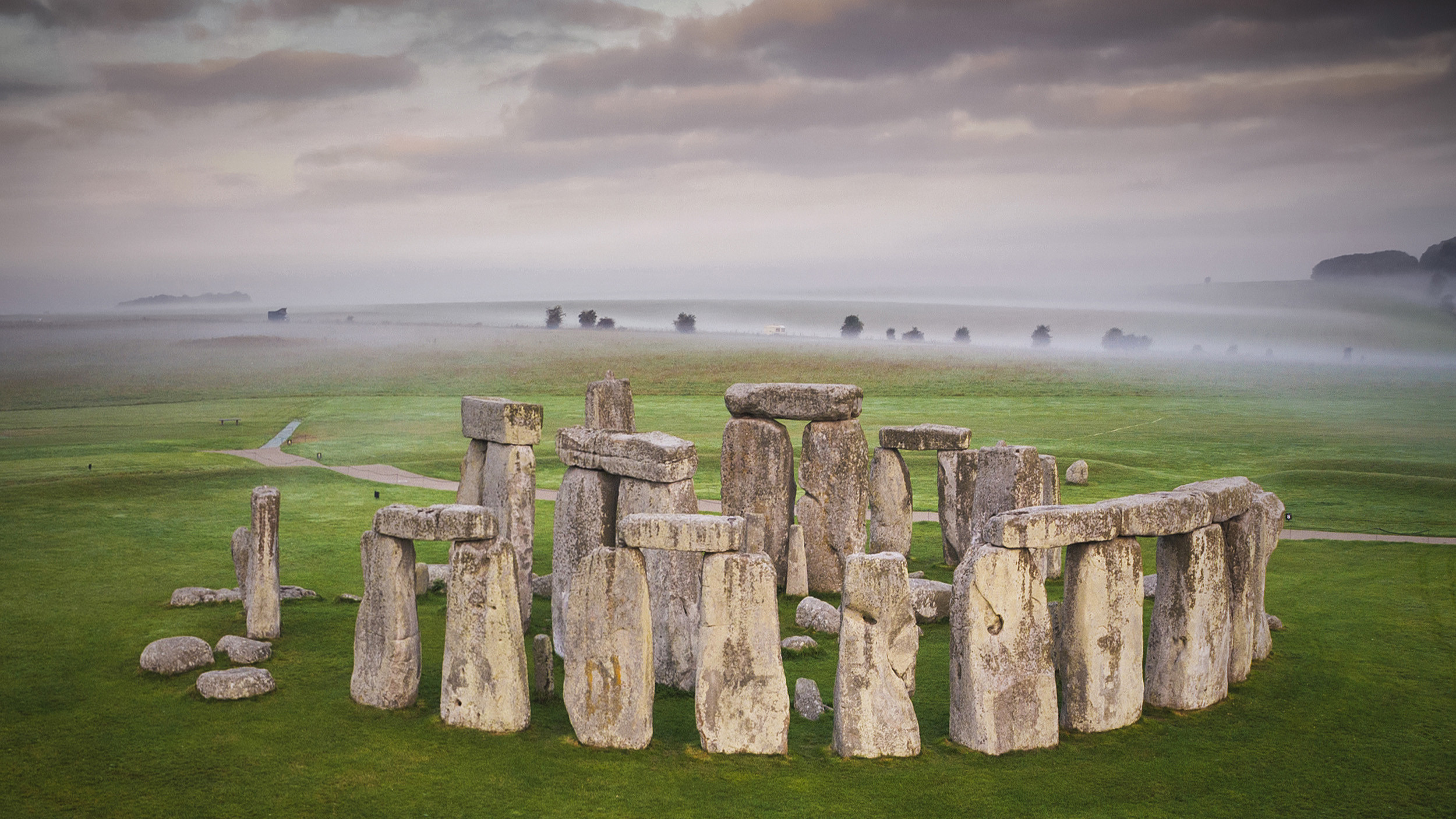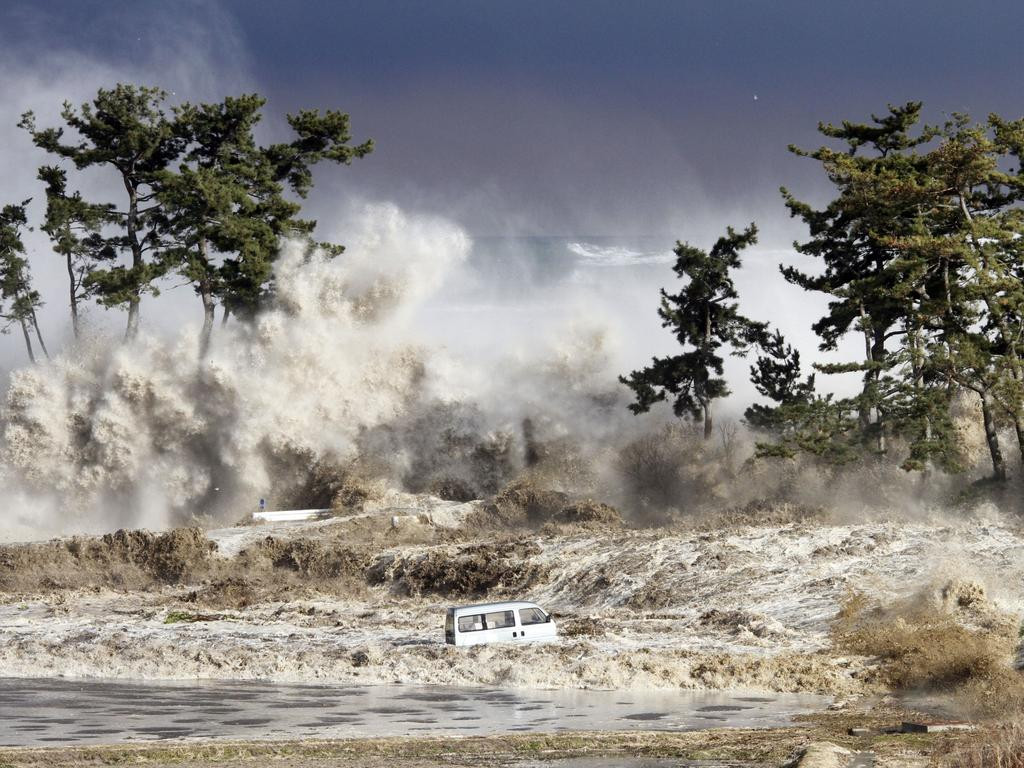It is a discovery that has astonished experts, shaken academe, and overturns so many lazy notions about our Neolithic forebears in Britain, long, long ago. That, in fact, they were a capable – even sophisticated - people who thought nothing of very long journeys and roamed freely in a green and woody island with no internal borders. They may well have spoken a common language, could seriously organise themselves in some great endeavour, and were as capable of the odd grand gesture as shameless as any modern politician. And what could be more stunning than hauling a stone to the centre of your greatest showpiece from the other end of the land – a thousand years before humankind even invented the wheel?
Two weeks ago, experts announced that exhaustive study of the central ‘Altar Stone’ at Stonehenge, Wiltshire - and beyond any reasonable doubt – is from the far north of Scotland. Academics say the Altar Stone at Stonehenge was transported from Northern Scotland. It’s a 6-tonne slab of Old Red Sandstone, close study of its crystalline structure confirms it is from the Orcadian Basin – that’s a swathe of north-east Scottish coastal rock broadly from Moray through Caithness to Orkney – and it somehow fetched up, in a place of centrality and honour, at Britain’s foremost megalithic site and deep in the Home Counties.
Even today, it’s a bit of a yomp from the likes of John O’Groats to Wiltshire. Almost 500 miles, a wearying 13-hour drive in your car, or a 10-day walk – and that’s without dragging some rough ruddy rock roughly the weight of an HGV. But that’s exactly the feat our forebears pulled off, around 5,000 years ago. The team at Curtin University in Perth are adamant, and with confident 95 per cent accuracy, that the Altar Stone’s ‘fingerprint’ confirms its origins in the Northern Highlands.
Their work involved electron microscopes, lasers, and the geological aging of individual mineral grains in rock samples and – sparing paragraphs of technobabble – could not be more convincing. This stone is from a far corner of Scotland. And not, like much of the Stonehenge complex, from Wales. ‘The findings are truly remarkable – they overturn what had been thought for the past century,’ says co-author Professor Richard Bevins of Aberystwyth University. ‘It’s thrilling to know that our chemical analysis and dating work has finally unlocked this great mystery.’
How did the Stone Arrive?
But that is only the beginning of the mystery. How ever did this mighty slab end up all that way from home? Bevins’s Aberystwyth colleague, Professor Nick Pearce, simply marvels. ‘This stone has travelled an awful long way – at least 700 km - and this is the longest recorded journey for any stone used in a monument at that period.
‘The distance travelled is astonishing for the time. While the purpose of our new, empirical research was not to answer the question of how it got there, there are obvious physical barriers to transporting by land, but a daunting journey if going by sea. ‘This Scottish source shows a high level of societal organisation in the British Isles during the period.’
And how. For, logically, there are only three possible explanations. That the slab was somehow borne into the deep heart of England, during the Ice Age, by glacial drift; that it was deliberately taken all that way south by sea – or that it was hauled overland, doubtless by an awful lot of people working in relays and, probably, over some months.
Glacial Drift?
It is striking how, over the last fortnight, how many armchair experts have hit their keyboards to insist the Altar Stone can be nothing but a ‘glacial erratic’ swept all that way to Midsomer Murders country by slow, slow tides of moving ice. It is as if they cannot accept that Neolithic Britons were capable of imagination, initiative, planning, co-operation and basic technology. Yet these were people, in all their essentials, just like us. They tilled land, tended animals, paired off and made love and raised children. They tended their sick and cared when they died. Buried them with reverence and honour; threw up stately tombs and complexes of stone.
They tamed dogs. Now and then, fought each other. And, at night, they gazed skywards and marvelled at the glory of the stars, just as we do today – if through fantastically clean, pure air and without the irritation of light-pollution.
Only a fool would dispute glacial drift. Within minutes of my own home on the isle of Lewis I could show you bedrock striated millennia ago by ice. Point out many huge, randomly abandoned boulders. Some of them – like the ‘Asbestos Rock’ on the isle of Scarp – are true erratics, wholly unconnected to local geology. But, while some scientists quibble, the mass of evidence is against the Altar Stone trundling all that way south, somehow hopping from one glacier to another like Mr Norris changing trains.
There are two problems with the hypothesis. First, while there is some evidence of a little southwards glacial, coastal drift off our eastern shores, the absolute northern frontier of this possibility barely reaches the Orcadian Basin. The second is – and we need only look around us – is that the mass of glacial movement in Scotland was from south to north and east to west. That’s attested by a host of ‘crag-and-tail’ features – Jordanhill in Glasgow, the Craiglockhart hills in Edinburgh and, perhaps most obvious and famous, the Royal Mile and Castle Rock in Scotland’s capital. To say nothing of a succession of striking freshwater lochs on the west side of Lewis, from Barvas to Dalbeg, each barely dammed from the thundering Atlantic by a natural ‘moraine’ of piled stones – and unique in the British Isles.
‘From Orkney,’ says Professor Pearce, ‘I can’t see a way that the stone hikes a ride on half a dozen glaciers in the right order to end up on Salisbury Plain.’
Was It Quarried?
The academics are also convinced that the Altar Stone was quarried. ‘Based on our fieldwork in south-west Wales it is likely that the stone was extracted, rather than just lying loose on the surface,” said Professor Bevins. Archaeologists have previously found stone wedges and hammerstones in the Preseli area of Wales – whence were hauled the eighty Stonehenge bluestones - that appear designed for such a task. Cutting and dressing the Altar Stone was well within Neolithic capabilities.
Could It Have Been Moved By Sea?
As we can dismiss the glaciers, we can also discount the possibility that the rock was brought all that way by sea. It was the third century AD before anyone, anywhere, invented the rudder – the Chinese, under the Han dynasty – and the thirteenth century and the Battle of Largs before ruddered ships appear in Scotland. Without a rudder, a sailboat cannot make any headway against the wind –bearing in mind that our prevailing winds are from the south and west; and, in especially once you are south of Dunbar, the waters off our eastern shores are, even still, a dangerous place to be if the weather turns nasty. There are no convenient firths, capes or islands to resort in or behind for shelter and, as recently as April 1966, the stout twin-screw motor-vessel Anzio I – formerly the veteran MacBrayne mailboat Lochinvar – was wrecked south of the Humber and with the sad loss of all aboard. There is in any event no archaeological evidence whatever of advanced Neolithic boats. ‘Experiments have been done trying to bring the equivalent of the bluestones on rafts across the Severn,’ Heather Sebire, senior curator of English Heritage, said. ‘I’m afraid none of them have been successful. They sank.’
The Land Route is the Only Viable Option
Fantastic as it may seem, we are forced irresistibly to the conclusion that the Altar Stone was deliberately hewn from rock in the far Highlands and carried overland all the way to Wiltshire. ‘I cannot remember an occasion when a single discovery changed the way I think about Stonehenge as much as the one announced this week,’ said Mike Pitts – he has been in charge of digs on the site for over forty years – on 18th August. Whatever mechanisms they used, ‘Neolithic people would have had no trouble shifting the Altar Stone by land if they wanted to.
A popular idea is that log rollers were used, as shown by a full-scale model at the Stonehenge visitor centre. They don’t work: rollers are impossible to control...’ Pitts believes the Stonehenge engineers fashioned strong, strong wooden sledges. Many men would have been involved in the dragging. They would have strewn light branches before this sledge on softer ground. They may even have carried lengths of what Americans, in the Civil War era, called ‘corduroy road’ - logs roped tightly together; and Neolithic folk made very stout, serviceable rope from things like lime bark (as, in the Western Isles, not so long ago any crofter could fashion excellent ones with heather.)
And they would have come all that way by the east-coast plains – not trying to anticipate the A9 through deeply forested mountains hoaching, and into the Christian era, with wolves and bears. ‘My gut feeling is that it came over land and it possibly took a long time and was not necessarily in one fell swoop,’ said Heather Sebire. ‘Getting places as quickly as possible is a modern concept – we’re always in a hurry. Their mindset was probably very different. You can think of it as a pilgrimage...’
Or, as Mike Pitts decisively puts it, ‘Neolithic people didn’t travel as far as north-east Scotland to fetch a stone for Stonehenge: there were plenty of similar stones much, much closer. ‘They went to make a point. The longer the journey took, and the more people who gave their labour to the project, the more successful it was. They went because it was so far...’
A Journey of Significance
At this point, we should stand quietly back and remind ourselves of two things. First, that we today are a soft people, loath to tramp any distance and very reluctant to get wet. And, secondly, a precept vital in the study of prehistory – that present perceptions of past peoples are not the same as past peoples’ perceptions of their present.
Stonehenge is not in fact the oldest megalithic cathedral in these islands. That at Callanish, here on Lewis, began around 1,500 years earlier, if initially as an earthen mound with, perhaps, timber structures. The greatest expert on Callanish is Gerald Ponting, 85, who says that the two complexes were thrown up for different ends – and neither, contrary to general belief, to celebrate the midsummer solstice. Callanish is essentially a processional theatre to mark the Major Lunar Standstill, which happens every 18.6 years; Stonehenge focuses on the midwinter solstice and the unconquerable Sun.
‘Knowledge of the origin of the Stonehenge Altar Stone is hugely significant for our understanding of that period. I’ve read Mike Pitts’s article and I tend to agree with his idea of land transport, perhaps taking many years and cementing links between distant communities. ‘We know that some of the pork eaten at feasts at Durrington Walls near Stonehenge came from pigs raised in Scotland,’ enthuses Ponting. ‘Neolithic people did travel great distances. ‘We now know, without any doubt, that the Stonehenge Altar Stone came from the north of Scotland, perhaps Orkney... But my immediate thought was, “Of course the builders of Stonehenge wanted an Orkney megalith at the centre...” ‘Evidence suggests that megalithic culture, including the building of stone circles, spread to the rest of the British Isles from Orkney.’
The Altar Stone, then, was no mere rock: it was a status symbol. And we should not underestimate the hardiness of our forebears. Even at the edge of living memory, Hebrideans thought nothing of walking great distances. A friend’s great-grandmother, Effie MacLean, once made the 12-mile hike from Leurbost to Breasclete, for Free Presbyterian communion services, ‘in a storm of wind and rain.’ She was 82. Hector Maciver, born in 1910 and who became a celebrated Edinburgh teacher, essayist and broadcaster, was once sent from Shawbost to Stornoway to sell the family cow. On his own. He did not take the long road round by Barvas; he traversed the Shawbost hills and the great moor of Lewis, returning – sans Daisy – by nightfall.
Today scoutmasters wouldn’t stage that as a Duke of Edinburgh Award ploy without risk-assessments in triplicate: Hector was then twelve years old. The journey of the Stonehenge Altar Stone, practically the length of Britain, was protracted. But indeed a pilgrimage; a carnival. One can imagine local excitement as it approached. How folk would have talked of little else for decades. The nights of feasting; the quaffing of much ale. The local lasses desperate for the attention of one – any – of those fabled youths with the big shoulders and callused hands. Experts are convinced that the Altar Stone was quarried specially for use at Stonehenge. Trying to touch the very rock – as the lads themselves were so excited to travel through community after community, making a tale they could seriously tell future grandchildren. The best modern parallel is May 2012, when the Olympic Torch travelled by relay around the United Kingdom – in a route deliberately planned so that 95% of the population would, at some point, would be within an hour’s drive to have a look and which even took in the Western Isles. It was really, when you come to think of it, quite irrational, but even greying Stornoway aunts of mine arose at dawn to grab a glimpse of it. And, if in a far sadder spirit, how many of us turned to see the late Queen’s hearse glide past, or queued on cobbles for hours to file by her coffin – just to have that tiny, personal part in history.
‘This is what’s new about this Stonehenge revelation,’ insists Mike Pitts. ‘This journey that reached right across the British Isles implies there was direct, physical communication between Neolithic communities across Britain. These were complex, networked societies in ways we are just beginning to understand.’

















